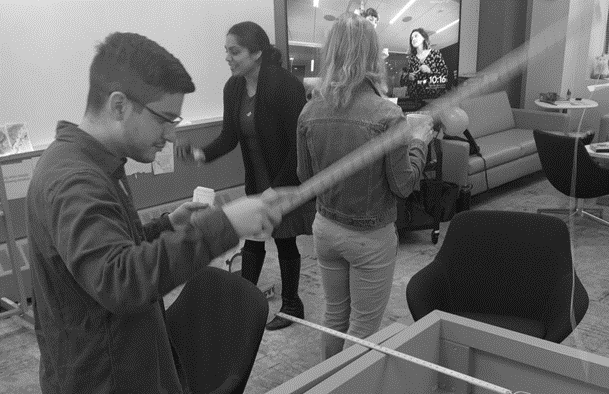
Rupal Jain, the Director of Clinical Practice and Student Support at the Woodrow Wilson Academy spoke with MITili about the new Woodrow Wilson Graduate School of Education program. Jain spent nine years as an award-winning educator, curriculum designer, and educator preparation specialist.
A former graduate research assistant with MIT Media Lab’s Lifelong Kindergarten, Rupal holds an Ed.M. in Technology, Innovation, and Education from the Harvard Graduate School of Education, as well as a B.S. and M.A. from the University of Connecticut.
Tell us about how the Woodrow Wilson Academy of Teaching and Learning came to collaborate with MIT?
The collaboration began as the result of conversations between the presidents of the Woodrow Wilson National Fellowship Foundation and MIT. MIT is serving as an incubator for the Academy and has created the Teaching Systems Lab (TSL) within the Office of Open Learning (OL). TSL is creating games and simulations that will support and test teacher candidates’ readiness for the classroom. MIT brings expertise in learning science, simulations and games, design thinking and process, technology, and STEM disciplines. The Academy awards, annually, Teaching and Learning Innovation Grants (TLIG) aimed at supporting MIT faculty research to advance the quality of teacher preparation.
What is the mission of the Woodrow Wilson Academy and how will you measure success?
The Woodrow Wilson Academy of Teaching and Learning (WW Academy) is a graduate school of education that prepares outstanding individuals for successful careers as educators in the classrooms of today and to shape teaching and learning for the schools of tomorrow. The Academy program is competency-based, with assessments designed to measure mastery of learning objectives that define the knowledge, skills and abilities necessary for a teacher to be classroom ready on day one. Teacher candidates will be assessed continuously as they move through the curriculum which is formulated around real problems of practice - called challenges - that novice teachers face. At the end of each challenge, teacher candidates submit a final assessment that includes demonstration in a clinical setting to demonstrate mastery of the competencies embedded in that challenge. Teacher candidates graduate only when they demonstrate successfully that they have mastered all of the program competencies.
How will the Academy differ from other graduate schools of education?
The Woodrow Wilson Academy of Teaching and Learning seeks to transform the existing model of teacher and school leader education by instituting a personalized, competency-based program, which shifts the current focus of education from how long candidates must be taught to what they have learned and can do. It changes the emphasis in education from establishing uniform time-fixed processes—credits that must be accumulated, courses that must be completed and lengths of time students must spend in college classes—to achieving common, personalized, time-independent outcomes: the skills and knowledge necessary to be a successful teacher or school leader from day one. The WW Academy is being created to prepare teachers both to succeed in today’s classrooms and to move those classrooms into the future. It models the future in its curriculum, activities, and design.
What has been the biggest hurdle to launching the Academy?
The Academy has made significant progress since its launch. Approximately $20 million in funding has been received from foundations and individual donors. The Academy has received approvals from the Commonwealth of Massachusetts to endorse graduates for licensure and to award a Master of Education (M.Ed.) degree. Founding faculty and staff have been hired to build the program and develop the curriculum with a talented group of ten design fellows. The first class of 22 students have been accepted for the launch of the program in fall 2018. The Academy has recruited a board of trustees, acquired physical space in Cambridge, and is currently searching for a full-time president. The Academy is built on a philosophy of “fail fast” by designing prototypes that go through an iterative process of design, test, and redesign. This methodology provides the opportunity to find out what works, what does not work, improve what seems promising, and polish what’s strong.
What is your favorite thing about working with MIT?
There are many wonderful things about working with MIT. Perhaps my favorite is the ability to work with the talented colleagues that work with us on the Academy project. In addition to the incredible learning designers and research scientists we interface with daily, I have also learned so much from the many students who have worked with us as UROPs.